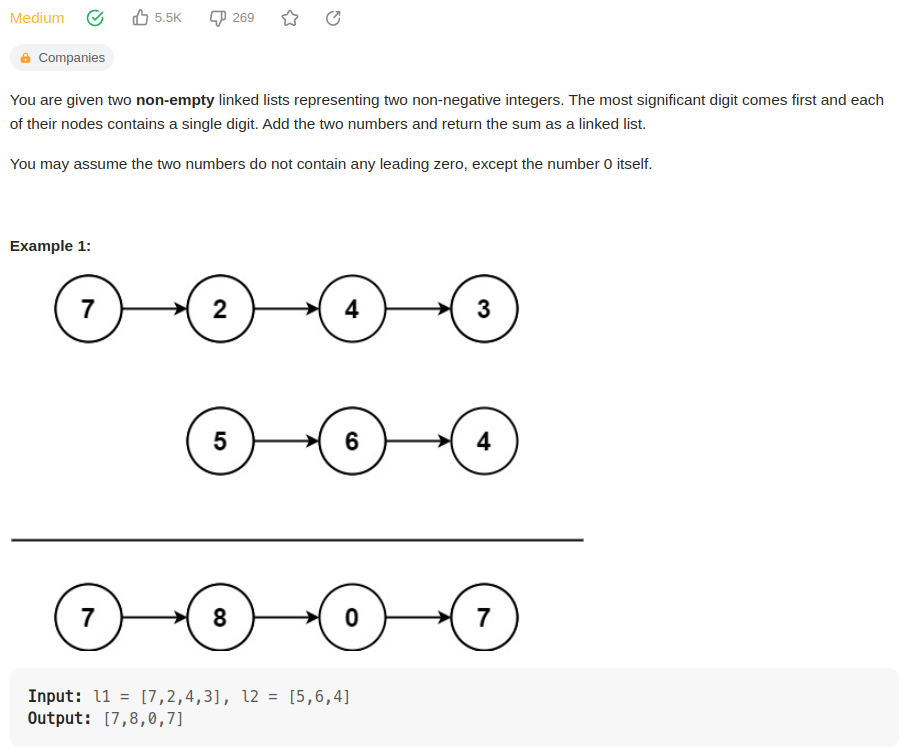
用链表代表2个数字,这2个数字相加的和用链表返回。
最高位在链表的head.
思路:
1.链表逆序
数字相加是从低位到高位的,然而链表中的数字是从高位指向低位。
所以涉及到链表的逆序。
逆序之后只需从head到tail把两个链表的数字相加,再用一个int表示进位。
链表的逆序:
最左边的数字逆序后应该是tail, 它的next指向null.
后面的数字每次都指向它的前一个数字。
所以用cur表示当前node, cur.next指向它前一个node,
然后cur移动到链表的下一节点,不停地把cur.next指向前一个node.
在把结果的数字一个一个地保存进结果的链表中时,
不断地把新数字指向前一个数字,就实现了从低位到高位保存的效果。
class Solution {public ListNode addTwoNumbers(ListNode l1, ListNode l2) {ListNode newHead = null;int carry = 0;l1 = reverseList(l1);l2 = reverseList(l2);while(l1 != null || l2 != null || carry > 0) {int num1 = (l1 != null ? l1.val : 0);int num2 = (l2 != null ? l2.val : 0);int sum = num1 + num2 + carry;int num = sum % 10;carry = sum / 10;ListNode cur = new ListNode(num);cur.next = newHead;newHead = cur;l1 = (l1 != null ? l1.next : null);l2 = (l2 != null ? l2.next : null);}return newHead;}ListNode reverseList(ListNode head) {ListNode pre = null;ListNode cur = head;while(cur != null) {ListNode next = cur.next;cur.next = pre;pre = cur;cur = next;}return pre;}
}

2.Stack
如果不想用链表逆序,可以用Stack, 同样可以达到逆序的效果,但是速度不及上面的快。
public ListNode addTwoNumbers(ListNode l1, ListNode l2) {Stack<Integer> st1 = new Stack<>();Stack<Integer> st2 = new Stack<>();ListNode res = null;int carry = 0;//相当于逆序链表while(l1 != null) {st1.push(l1.val);l1 = l1.next;}while(l2 != null) {st2.push(l2.val);l2 = l2.next;}while(!st1.empty() || !st2.empty() || carry > 0) {int num1 = st1.empty() ? 0 : st1.pop();int num2 = st2.empty() ? 0 : st2.pop();int sum = num1 + num2 + carry;int num = sum % 10;carry = sum / 10;ListNode cur = new ListNode(num);cur.next = res;res = cur;}return res;}

:绘制一个圆环和一根针)



(四))











——传输层和应用层)
